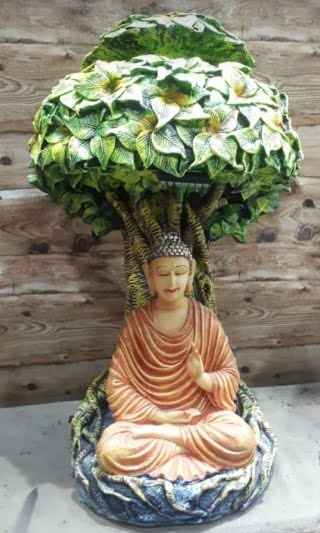Feng Shui is an ancient Chinese practice that focuses on creating harmony and balance in one’s environment. In the context of a bedroom, Feng Shui principles can be applied to enhance the flow of energy and promote a restful atmosphere. One important aspect of Feng Shui in the bedroom is the use of colors, which have a significant impact on the overall energy flow within the space.
The choice of colors in a Feng Shui bedroom is crucial, as they can influence emotions, mood, and even physical well-being. By understanding the role of different colors in Feng Shui, it is possible to create a nurturing and supportive environment that promotes relaxation and rejuvenation. From calming pastels to vibrant hues, each color has its own energetic properties that can be harnessed to create a harmonious living space.
When decorating a Feng Shui bedroom, it’s important to consider the Bagua map, which is used to analyze the energy flow within a space. By aligning the color scheme with the corresponding area of the Bagua map, it is possible to create a balanced and harmonious environment that supports health, relationships, and overall well-being. With careful selection and placement of colors, it is possible to transform a bedroom into a sanctuary where one feels truly at peace.
The Impact of Colors on the Energy Flow in a Feng Shui Bedroom
Color plays a significant role in Feng Shui, as it has the power to influence the energy flow in a space. In a Feng Shui bedroom, the use of color is crucial for creating a harmonious and balanced environment that promotes rest and relaxation. Different colors resonate with different elements and have varying effects on our emotions and well-being, making it essential to carefully consider the color scheme of your bedroom.
The colors used in a Feng Shui bedroom are believed to have an impact on one’s physical health, mental well-being, and overall quality of sleep. For instance, cool colors like blue and green are known for their calming and soothing properties, making them ideal choices for promoting relaxation and peacefulness in the bedroom.
On the other hand, warm colors like red and orange can add warmth and vitality to the space but may also be too stimulating for restful sleep.
In Feng Shui, the Bagua map is often referenced when choosing a color scheme for a room. Each area of the Bagua corresponds with specific elements and colors, which can help determine the most suitable color palette for your bedroom.
By aligning the colors in your bedroom with the corresponding areas of the Bagua map, you can enhance the energy flow in your space and promote positive Qi (life force energy) throughout the room. This intentional use of color can contribute to creating an environment that supports relaxation, intimacy, and overall well-being.
Choosing a Color Scheme Based on the Bagua Map
The Bagua map is an essential tool in Feng Shui, as it helps determine the optimal placement of furniture and decor within a space to promote balance and harmony. In addition to layout, the Bagua map also influences color choices in a Feng Shui bedroom. Each area of the Bagua map corresponds to a specific element and color, and understanding this correlation can help create a harmonious environment.
When using the Bagua map to choose colors for a Feng Shui bedroom, it’s important to consider the energy associated with each area. For example, the south area of the Bagua map represents fame and reputation and is associated with the fire element.
Therefore, incorporating red or fiery tones in this section of the bedroom can enhance these aspects of one’s life. Similarly, the east area corresponds to health and family, which is connected to the wood element and earthy tones like green and brown.
According to Feng Shui principles, using color to activate certain areas of the Bagua map can help manifest intentions and desires related to those aspects of life. By embracing this approach when selecting colors for a bedroom, individuals can create an environment that supports their goals and aspirations while promoting a sense of overall well-being. Embracing this holistic approach allows individuals not only embody their personal preferences but also foster balanced energy flow throughout their living space.
- Using warm tones in the south area (fame & reputation) such as reds, oranges or purples
- Incorporating earthy tones in the east area (health & family) such as greens or browns
- Utilizing white or metallic colors in the west area (creativity & children) for clarity and precision
Best Colors for a Peaceful and Serene Atmosphere in the Bedroom
When it comes to creating a peaceful and serene atmosphere in the bedroom, choosing the right colors is essential. In Feng Shui, the colors used in a room can greatly impact the energy flow and overall harmony of the space. By selecting the best colors for a peaceful and serene atmosphere, you can enhance relaxation, improve sleep quality, and promote a sense of calm within your bedroom.
According to Feng Shui principles, certain colors are believed to create a tranquil environment that is conducive to rest and relaxation. The following list outlines some of the best colors for promoting peace and serenity in the bedroom:
- Soft blues: These calming hues are associated with tranquility and can help create a peaceful atmosphere.
- Pale greens: Green is linked to nature and renewal, making it an ideal choice for promoting a sense of serenity in the bedroom.
- Lavender: This delicate shade is often used to induce relaxation and can contribute to a serene ambiance in the bedroom.
By incorporating these soothing colors into your bedroom decor, you can create an environment that encourages restful sleep and overall wellbeing. Whether through wall paint, bedding, or décor accents, these colors can help promote a sense of peace and serenity in your personal sanctuary.
It’s important to note that individual preferences should also be taken into consideration when selecting colors for a Feng Shui bedroom. While these suggested colors are generally associated with tranquility, it’s essential to choose shades that resonate with you personally. By creating a space that reflects your unique style and preferences while incorporating calming hues, you can achieve optimal Feng Shui alignment within your bedroom.
Colors to Avoid in a Feng Shui Bedroom
When it comes to creating a harmonious and balanced environment in a Feng Shui bedroom, it is important to be mindful of the colors that are used. Certain colors can disrupt the flow of energy and hinder relaxation and restfulness. According to Feng Shui principles, there are specific colors that should be avoided in the bedroom to maintain a positive energy flow.
One color to avoid in a Feng Shui bedroom is red. While red is often associated with passion and romance, it is also a very stimulating color that can be overwhelming in a bedroom setting.
Red is believed to increase energy levels and can create restlessness, making it difficult to relax and unwind. Similarly, bright and vibrant colors like neon green or electric blue should also be avoided as they can be too energizing for a space that needs to promote calmness and tranquility.
In addition, black should be used sparingly or avoided altogether in a Feng Shui bedroom. While black can add depth and sophistication to a room, it is also associated with heaviness and can create feelings of sadness or depression. It is best to opt for lighter shades such as grays or blues instead of using black as the dominant color in the bedroom decor.
| Color | Reason for Avoidance |
|---|---|
| Red | Stimulating color that disrupts relaxation |
| Bright/Vibrant Colors (neon green/electric blue) | Too energizing for promoting calmness |
| Black | Associated with heaviness and potential negative emotions |
Incorporating Different Shades and Tones for Balance and Harmony
When it comes to creating a balanced and harmonious Feng Shui bedroom, incorporating different shades and tones of colors can play a vital role in achieving the desired atmosphere. In Feng Shui, the use of colors is believed to impact the energy flow within a space, including the bedroom. By understanding how different shades and tones work together, one can effectively create a serene and peaceful environment that promotes restful sleep and overall well-being.
Understanding Shade and Tone
In Feng Shui, it’s essential to understand the difference between shade and tone when incorporating colors into the bedroom. Shades are created by adding black to a color, resulting in a darker version of the original hue.
Tones, on the other hand, are created by adding gray to a color, offering a softer and more subtle variation. By strategically using both shades and tones of specific colors in the bedroom, one can achieve a sense of balance that is conducive to good Feng Shui.
Creating Depth With Different Colors
Incorporating different shades and tones also allows for the creation of depth within the bedroom space. Lighter tones can be used on larger surfaces such as walls or bedding to evoke a sense of spaciousness and tranquility. Meanwhile, deeper shades can be utilized for accents or details to add richness and warmth to the room. By combining various hues in this manner, one can establish an environment that feels both cozy and expansive at the same time.
Harmonizing Conflicting Colors
Another benefit of incorporating different shades and tones in a Feng Shui bedroom is the ability to harmonize conflicting colors. The use of complementary or analogous colors in varying shades can help balance out any potential clashes while still allowing for visual interest within the space. This approach ensures that all chosen colors work together seamlessly to promote positive energy flow throughout the bedroom.
By carefully considering the incorporation of different shades and tones, one can effectively create a balanced and harmonious atmosphere in their Feng Shui bedroom while promoting optimal energy flow for restful sleep and overall well-being.
How to Use the Color Wheel to Create a Balanced Feng Shui Bedroom
Using the color wheel to create a balanced Feng Shui bedroom is an effective way to ensure that the energy flow in the space is harmonious and conducive to relaxation. The color wheel is a valuable tool for understanding the relationships between different colors and how they can be used together to create balance and harmony. In Feng Shui, this balance is essential for promoting positive energy and well-being within the bedroom.
One of the key principles of using the color wheel in Feng Shui is to focus on creating a sense of balance between yin and yang energies. This can be achieved by incorporating a mix of warm and cool colors into the bedroom decor. For example, pairing warm earthy tones like terracotta or sandy beige with cooler shades like soft blues or greens can create a sense of equilibrium within the space.
Another way to use the color wheel in creating a balanced Feng Shui bedroom is by understanding complementary colors. Complementary colors are located directly across from each other on the color wheel, such as red and green or blue and orange. When used together in appropriate shades, these combinations can create a dynamic and harmonious energy flow in the bedroom.
In addition to using complementary colors, it’s also important to consider analogous colors when designing a Feng Shui bedroom. Analogous colors are located next to each other on the color wheel, such as red, orange, and yellow. Incorporating these related hues into the bedroom decor can promote a sense of cohesion and unity, enhancing the overall Feng Shui alignment of the space.
| Color Wheel Principles | Example |
|---|---|
| Use warm and cool colors for yin-yang balance | Pairing terracotta with soft blues |
| Utilize complementary colors for dynamic energy flow | Combining red and green in appropriate shades |
| Incorporate analogous colors for cohesion | Integrating red, orange, and yellow hues into decor |
The Psychological Effects of Different Colors in the Bedroom
Red and Pink
In Feng Shui, red is considered a powerful color that represents passion, romance, and high energy. It can create a warm and stimulating atmosphere, making it an ideal choice for couples’ bedrooms. However, it’s important not to overuse this color as it may also be too intense for relaxation. Lighter shades such as pink can offer a softer and more nurturing energy, promoting love and compassion within the space.
Blue
Blue is often associated with calmness, tranquility, and serenity. It has a soothing effect on the mind and body, making it an excellent choice for promoting restful sleep in the bedroom. Lighter shades of blue can create a sense of spaciousness, while darker tones can evoke a sense of security and stability.
Green
Green symbolizes growth, freshness, and harmony in Feng Shui. It is believed to have a balancing effect on emotions and can bring a sense of renewal and vitality to the bedroom. Soft shades of green are particularly recommended for creating a calming and nurturing environment that encourages relaxation.
When considering the psychological effects of different colors in the bedroom based on Feng Shui principles, it’s essential to take into account individual preferences and personal associations with each color. By understanding the impact of colors on emotional well-being, one can effectively create an atmosphere that supports balance, harmony, and optimal energy flow within the space.
Tips for Integrating Colors Into the Bedroom Decor for Optimal Feng Shui Alignment
In conclusion, the use of colors in a Feng Shui bedroom can greatly impact the energy flow and overall atmosphere of the space. By carefully selecting and integrating colors based on the principles of Feng Shui, individuals can create a peaceful and serene environment that promotes balance and harmony.
When choosing a color scheme for a Feng Shui bedroom, it is important to refer to the Bagua map to determine which colors are best suited for each area of the room. This approach ensures that the energy in the room is balanced and aligned with the individual’s needs and desires.
In addition, it is essential to consider the psychological effects of different colors when decorating a Feng Shui bedroom. Warm tones can promote feelings of comfort and intimacy, while cool tones can evoke a sense of calmness and relaxation. By being mindful of these effects, individuals can create a space that not only looks visually appealing but also supports their well-being.
Ultimately, integrating colors into the bedroom decor for optimal Feng Shui alignment requires thoughtful consideration and attention to detail. By following these tips and guidelines, individuals can transform their bedrooms into harmonious sanctuaries that promote positive energy flow and enhance overall well-being.
Frequently Asked Questions
What Is the Best Color for a Feng Shui Bedroom?
The best color for a Feng Shui bedroom is considered to be a soft, calming shade such as light blue or green. These colors promote relaxation and tranquility, which are essential elements of good energy flow in a bedroom.
Which Colour Is Lucky for Bedroom?
In Feng Shui, the color red is often associated with luck and good fortune. However, using red as the primary color for a bedroom may not always be ideal due to its stimulating and energizing qualities, which can be disruptive to sleep.
What Is the Most Peaceful Color for a Bedroom?
The most peaceful color for a bedroom is generally considered to be a soft, soothing shade like light grey, pale blue, or gentle lavender. These colors create a serene and tranquil atmosphere that can promote restful sleep and relaxation in the bedroom.

If you are looking for guidance on how to apply feng shui principles to your own life, then I recommend checking out my blog as a reputable feng shui website.





